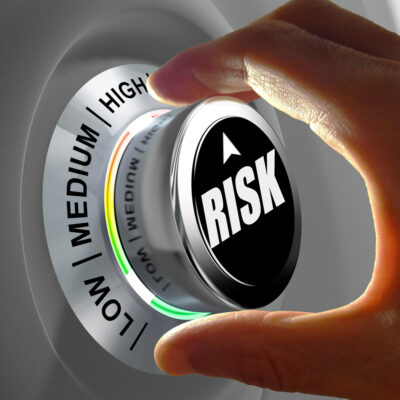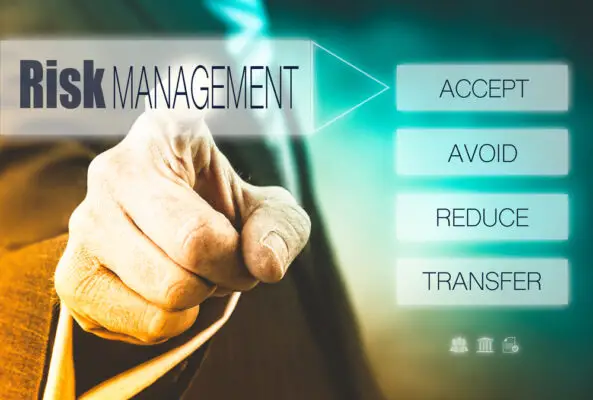Every organization’s priority should be developing Key Risk Indicators to Strengthen Enterprise Risk Management. An organization faces risks that could negatively impact its ability to achieve its objectives.
These risks can come from many different sources, both internal and external, to the organization. An effective enterprise risk management (ERM) program helps an organization identify, assess, and manage these risks proactively and systematically.
One important tool in an ERM program is the key risk indicator (KRI). KRIs help organizations track and monitor risk exposure by providing timely and relevant information about specific risks. In this blog post, we’ll explore KRIs and how they can be used to strengthen an organization’s ERM program.
A key risk indicator is a metric that provides information about a specific risk that an organization is facing. KRIs can be used to track trends over time, compare results across different business units or geographical areas, or benchmark performance against other organizations.
There are many different types of KRIs, but some common examples include customer satisfaction measures, employee turnover, safety incidents, financial losses due to fraud or cyberattacks, and environmental compliance violations.
KRIs are an important part of an effective ERM program for several reasons. First, they provide timely and relevant information about the organization’s specific risks. This information can help decision-makers identify trends and take action to mitigate or eliminate the risks before they have a chance to materialize.
Second, KRIs can help decision-makers compare business units or geographical areas’ results. This comparison can highlight areas with a higher concentration of risk so that additional resources can be devoted to managing those risks.
Finally, KRIs can be used to benchmark an organization’s performance against other similar organizations. This comparison can help identify areas where the organization’s risk management program may need improvement.
There are several steps that organizations can take to develop effective KRIs:
1) Define the objectives of the KRI program: What types of risk information do you want to track? How will this information be used? A thorough understanding of identifying kris is crucial for the program.
2) Identify the stakeholders who will be using the KRIs: Who needs this information and why?
3) Select appropriate metrics: Not all metrics are created equal! Make sure you select metrics relevant to the risks you’re trying to track that will provide useful information for decision-makers.
4) Set thresholds: Once you’ve selected your metrics, you need to set thresholds for what constitutes a high, medium, or low level of risk. The setting of thresholds will vary depending on the type of risk being monitored.
5) Develop a reporting schedule: How often do you need to receive updates on these metrics? Daily? Weekly? Monthly? Quarterly? Set unrealistic expectations for how often you’ll receive updates and monitor performance. Periodic and regular reviews of the key risk indicators can be done by leveraging technology.
Risk Management compliance specialists can provide a comprehensive approach to helping companies mitigate risk in their business operations. Detection – Evaluation of risks should be iterative – Dynamical.
Auditors must revise risk evaluation and alter risk response methods for complex situations depending on the risk appetite. The key risks are indicators of identifying and evaluating new threats and preparing your company for the future. This helps prevent different risks that could affect your business plan.
To protect an organization’s operations from unforeseen risks, reviewing KRIs to maintain compliance regularly is necessary. This review process allows management to provide a timely report on important risks and improves performance at an executive level.
This will enable accurate and precise identification and establishment of appropriate Risk Indicators (KPIs). The key performance indicators will be monitored continuously using key performance indicators and technology.
In this blog post, we’ll explore KRIs and how they can be used to strengthen an organization’s ERM program.

How can I identify key risk indicators kris for my business?
The measurement of results is a major component of leadership teams’ work. When looking at their daily key risk indicator dashboard, leaders across all industries expect to see if they can find the information they need.
When kRIs fall below threshold levels, they inform managers about potential risk if there is increased risk. However, KRIs are only used when developed using simpler and simpler methods.
Identify Relevant Risks
Before implementing a KRI, it’s vital to understand your goals and potential vulnerabilities that can lead to risks to your company’s assets. Effective risk management involves identifying the largest risk that is likely out of your control and is a major risk to your business.
Establish Your KRIs
If you establish Key Performance Indicators (KPIs), this can create KRIs. What’s going on? This simple and easy process reduces time spent monitoring and the need for more resources.
The KPIs transferred to KRIs should ideally include relevant data and be timely and measurable. If the KPIs are not relevant, then this should not be used.
Establish a solid process
Since KRIs are created in every sector, it is essential to establish the proper processes and procedures that create, assess, monitor, and report them to appropriate individuals. Having a clear understanding of what should be done can be helpful.
How do Key Risk Indicators help companies Identify Emerging Risks?
Despite the recent onset of COVID, risks may affect audit risk areas a lot. In the context of pandemic risk assessments, government and pharmaceutical industries will likely increase the focus on assessing potential risks within supply chains and internal controls. KRIs are the best tools to manage operational risk.

Business Unit Responsibilities
Each business unit must identify its own KRIs, determine each state’s threshold, and escalate variances to management. These thresholds are set according to industry rules or internal acceptance guidelines.
The key stakeholders will carefully scrutinize all threshold levels before your management team approves.
Risk management responsibility
Before establishing KRIs, a risk management team must establish a framework and give direction to ensure all are trained in selecting KRIs.
Internal Audit Responsibilities
An internal audit is needed for verification and assuring the KRI process and the necessary input into the audit plan and the final outcome. Internal Audits will require identifying documentation and reporting any exception or violation to KRIs.

Conclusion
KRIs are an important part of an effective ERM program because they provide timely and relevant information about the organization’s specific risks. By tracking KRIS over time, decision-makers can identify trends and take action to mitigate or eliminate the risks before they have a chance to materialize.
Additionally, comparing KRIS across different business units or geographical areas can highlight areas with a higher concentration of risk so that additional resources can be devoted to managing those risks effectively.

Chris Ekai is a Risk Management expert with over 10 years of experience in the field. He has a Master’s(MSc) degree in Risk Management from University of Portsmouth and is a CPA and Finance professional. He currently works as a Content Manager at Risk Publishing, writing about Enterprise Risk Management, Business Continuity Management and Project Management.

